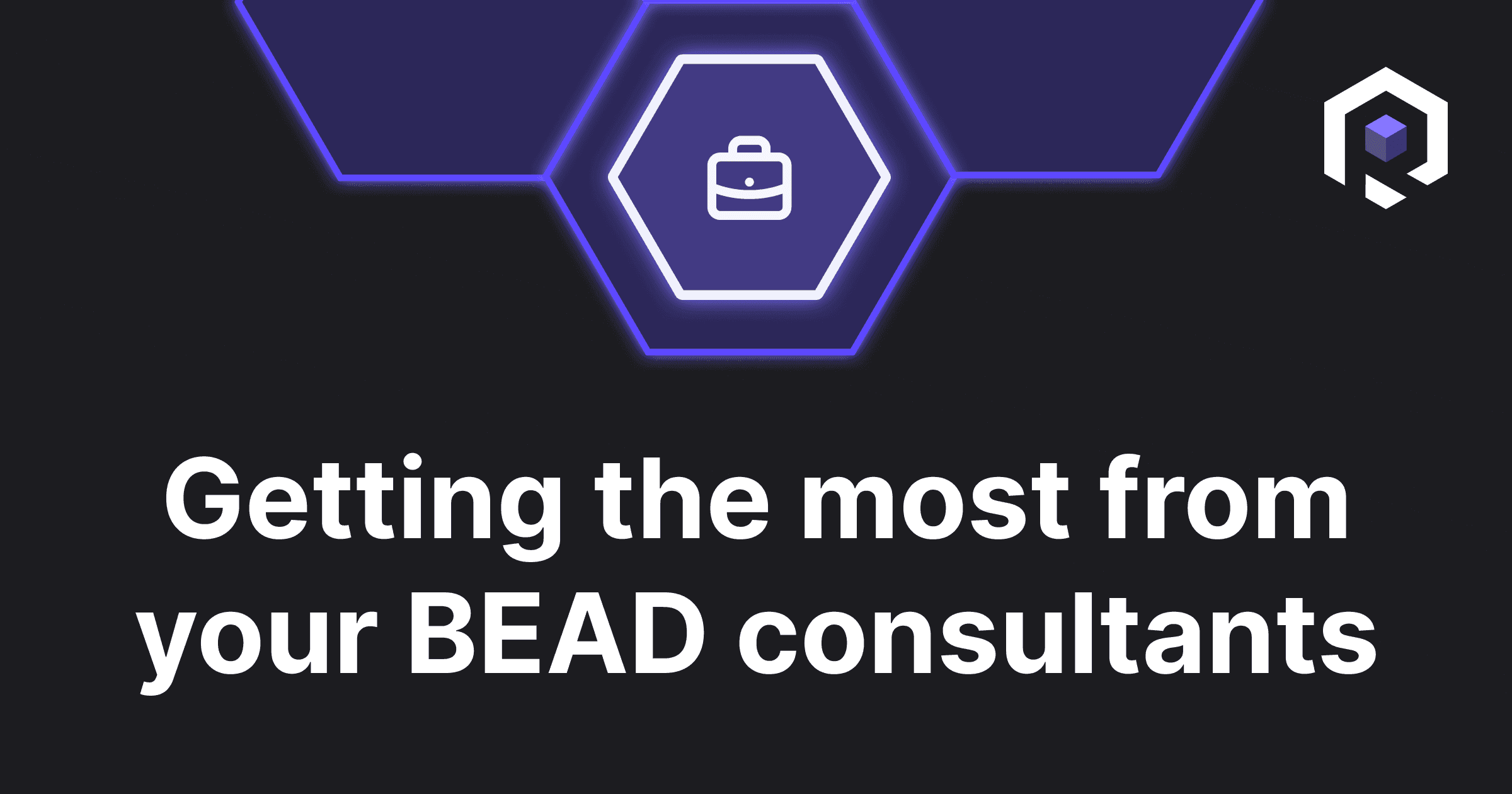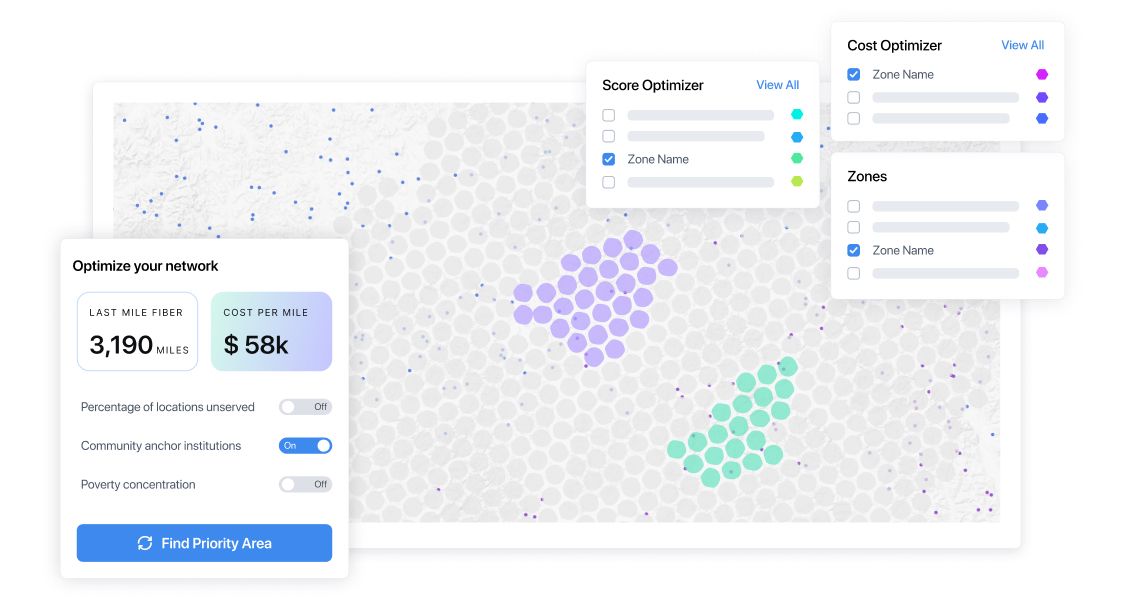
Unlocking consultants' highest potential
February 15, 2024
·
4 min read
States, territories, and tribal governments are at the foot of Mt. BEAD; they are not only expected to navigate the dispersion of $42 billion, but also juggle numerous stakeholder relationships, including consultants.
Under BEAD, these government entities must award millions to subgrant recipients, with the goal of building out broadband infrastructure for unserved and underserved locations, as well as connecting CAIs, or community anchor institutions.
Entities face tight deadlines and strict federal guidelines to deploy their funding. Funding recipients must respect individual state requirements, Fair Labor Act laws, trade restrictions and keep secure, detailed records of every step of their journey.
As a result of these guidelines, entities must seriously consider utilizing software tools that support their efforts. Failure to do so comes with numerous risks, including clawbacks of federal funding and lawsuits from ISPs, or internet service providers, and others impacted.
Here’s some ways that entities working with consultants can leverage data-driven software tools to maximize their investment:
Meeting deadlines
The NTIA’s BEAD NOFO, or the BEAD Notice of Funding Opportunity, outlines specific deadlines and timelines for states, tribal governments and U.S. territories throughout the BEAD process.
Entities so far have been issued initial planning funds, submitted their five-year plans and Volume I and II initial proposals. Louisiana was the first state in the country to receive approval for both its Volume I and II proposals.
States have flexibility in conducting their challenge process although there are some parameters set by the NTIA.
Challenge processes must allow for local governments, nonprofits and broadband service providers to “challenge” a determination made by the state in its initial proposal regarding which locations are underserved, underserved or operate as a community anchor institution thus possessing subgrant eligibility.
Broadly speaking, the challenge process is supposed to allow time for “a unit of local government, nonprofit organization, or broadband service provider” to “challenge a determination made by the Eligible Entity in the Initial Proposal” regarding which locations are underserved, unserved, or CAIs, and thus, eligible for the subgrants.
Designated consultants must be equipped with the appropriate tools to serve entities aiming to succeed in BEAD.
Ready’s Challenge Process Coordinator provides comprehensive services to states undergoing their challenge process. This includes detailed speed tests, specific datasets at the neighborhood level and robust collaborative workflows that allow entities and their consultants to focus their efforts and resources more efficiently to close their digital divide.
Applicants face a myriad of complex requirements which vary by state and a tight timeline that must be adhered to in order to be successful in BEAD. (Hint: If you’re an applicant reading this after the application has become public, it might be too late!)

Meeting Reporting and Compliance Requirements
It doesn’t end with deadlines for states either. Entities must be sure that they’re properly managing their data and fulfilling specific reporting and compliance requirements.
For states, the reporting and compliance requirements are staggering. They are time consuming, labor intensive, and come with no margin for error. Entities are expected to collect and maintain data about specific projects and deployment areas, workforce data, weather-and-climate related risks and a myriad of other factors.
A data-driven state broadband office strives for transparency in its record keeping and, more importantly, eagerly seeks to avoid subjectivity and ambiguity at all costs.
Ready’s Grantor Platform supports entities and their consultants through managing the vast amount of data through every stage of the BEAD process, including the challenge process and ongoing reporting and compliance requirements, thus decreasing the man hours necessary to fulfill these obligations.
Officials and consultants can view and compare detailed network build costs across their project areas taking advantage of optimal pathways to connect every home in need, regardless of technology. This macro-level view of the state’s current broadband offerings – alongside socioeconomic and geospatial data – allows for leaders to access a full picture in order to make data-informed decisions.
Officials and consultants can view detailed network build costs across their state or governing area, and weigh the needs in each part of the state. They can also identify optimal pathways to connect every home in need, using fiber and wireless designs gathered from across the state, using Ready to apply automatic mathematical models.

By providing both a macro-level view of the state’s current broadband service offerings, coupled with socioeconomic and geospatial place data, as well as micro-level views of each broadband serviceable location and county, officials and their consultants can zoom in and out of any given area, and get a full picture of the needs in one area compared to the needs across the state.
Ready’s Grantor Platform also provides a cache of post-grant functionalities, including project monitoring, management, and automated compliance reporting allowing for entities and consultants to proceed without worry about unfair scrutiny of their decisions.
Ultimately, these features enable states to ensure that their projects are on track, compliant with regulations, and deliver desired outcomes.

A Win-Win for Entities and Consultants
Partnering with Ready serves as a win-win for entities and consultants eager to simplify and streamline adherence to BEAD regulations, and maximize the multi-billion dollar investment in broadband infrastructure.
Leveraging Ready’s comprehensive software solutions allows for state broadband offices and consultants to maintain control and security over its data, ensure resource allocation, and meet their entity’s broadband objectives.
In short, states will have solutions configured to their specific needs while owning the data model allowing for consultants to focus on solving complex problems – rather than shuffling through yet another Excel sheet.

